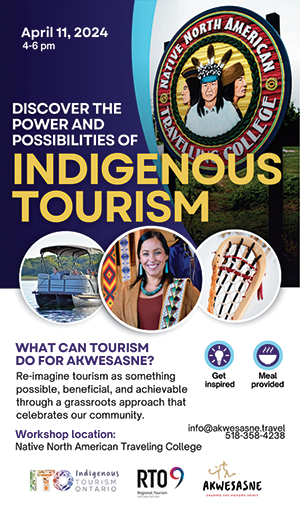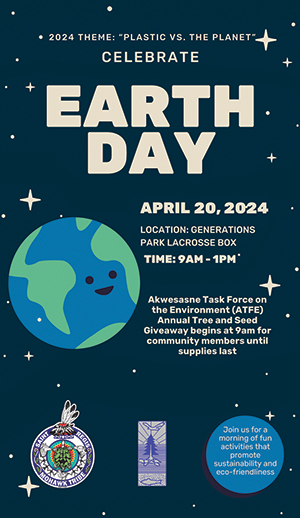#MeToo
“If you think someone deserves to be sexually assaulted or you think someone is ‘asking for it’ because of the their clothes, please delete yourself from my friend list.”
That was posted on Facebook on Monday, January 22, 2017.
“The line connecting the six human figures represents the equal rights that the Clan Mothers have, in regulating names of the people, so that there is no competition of infighting over who has the rights to the names, thus preventing duplication. The white background represents that the clan mothers (women) are the holders of the Kariwiio (Good Message), Kashastensera (Power) and Skennen (Peace)… excerpt taken from The Rotinonshonni - The People of the Longhouse.
How do we go from being women being “the holders of the Kariwiio (Good Message), Kashastensera (Power) and Skennen (Peace)” to demanding you delete yourself from a Facebook page if you believe someone deserves to be sexually assaulted; because of their clothes, or who they are, or where they were, or that they were drunk, or just because you believe sexual assault isn’t - sexual assault.
The #MeToo movement is too big to ignore. It started in Hollywood, which has long been a known as a bastion for favors, wanted and unwanted. And as the light turned on - it’s clearly been an unwanted behavior. In a land where salaries, roles and funding are counted in millions of dollars, everything is at stake. But the movement smacked of privileged righteousness. Here in Akwesasne, terms are counted in family members, bosses, co-workers and neighbors.
Defined – “sexual harassment” is bullying or coercion of a sexual nature, or the unwelcome or inappropriate promise of rewards in exchange for sexual favors. In most modern legal contexts, sexual harassment is illegal. Wikipedia
Defined – “sexual assault” is an act in which a person sexually touches another person without that person’s consent, or coerces or physically forces a person to engage in a sexual act against their will. Wikipedia
Statistics from National Institute of Justice says 4 out 5 native women will be victims of violence. This includes 56.1 percent who have experienced sexual violence, 55.5 percent who have experienced physical violence by an intimate partner, 48.8 percent who have experienced stalking, and 66.4 percent who have experienced psychological aggression by an intimate partner. Overall, more than 1.5 million American Indian and Alaska Native women have experienced violence in their lifetime.
According to NIJ, statistics by race show that women are not alone in this - American Indian and Alaska Native men also have high victimization rates. More than four in five American Indian and Alaska Native men (81.6 percent) have experienced violence in their lifetime. This includes 27.5 percent who have experienced sexual violence, 43.2 percent who have experienced physical violence by an intimate partner, 18.6 percent who have experienced stalking, and 73 percent who have experienced psychological aggression by an intimate partner.
In Canada there were 22 reported incidents of sexual assault for every 1,000 Canadians aged 15 and older, representing about 636,000 self-reported incidents of sexual assault in 2014, according to Statistics Canada. A greater risk was noted for women, young, Indigenous, single, homosexual or bisexual individuals, as well as those with poorer mental health.
But Canadian women are way more likely to experience sexual assault than men, with 87 per cent of sexual assault incidents reported in 2014 committed against women, reports Statistics Canada.
In Canada, 80% of Aboriginal girls under the age of 8 in the Northwest Territories have been sexually assaulted, 75% of Aboriginal girls under the age of 18 have been sexually abused, only 6% of sexual assaults are reported to the police and only 1% of date rapes are reported to the police (Statistics Canada), 63% of sexual assaults reported to the police involve girls and young women under the age of eighteen. Children and youth make up 61% of reported sexual assault cases, 31% of sexual assaults occur in dating and acquaintance relationships.
Of all incidents of sexual assault, 24% took place in the victim’s home, 20% in the perpetrator’s home, 10% in someone else’s home, 25% in a car, and 21% in a public place.
And in the work place, Labour Standards, Division XV.1 of Part III of the Canada Labour Code establishes an employee’s right to employment free of sexual harassment and requires employers to take positive action to prevent sexual harassment in the work place.
1. What is sexual harassment?
The Code defines sexual harassment, as any conduct, comment, gesture, or contact of a sexual nature that is likely to cause offence or humiliation to any employee; or that might, on reasonable grounds, be perceived by that employee as placing a condition of a sexual nature on employment or on any opportunity for training or promotion.
2. Who is entitled to protection from sexual harassment?
Under the Canada Labour Code, every employee is entitled to employment free of sexual
harassment.
In New York State – ‘Sexual harassment is a form of sex discrimination. Every employee in the State of New York is entitled to a working environment free from sexual harassment. The provisions of the Human Rights Law generally apply to employers with four or more employees.’
In talking to women in roles where they make a difference everyday, Aimee Barnes, Seven Dancers Coalition shared this, “Our women don’t want to report because our community is so small and the fear that “everyone” will know is tremendous. I have had clients who lived through the rape, reporting to the police, talking to investigators, talking to prosecutor; only to realize that they are not strong enough to continue with prosecution. This gives outsiders the image that the victim was lying, which is farthest from the truth.
A victim’s first instinct is to forget, they want to put it behind them and just have the trauma go away. Usually a year after the incident the thought of suicide is a possibility, especially if someone finds out or there is a threat of someone finding out. Victims will do anything to forget, such as switching school, changing jobs, moving, etc, but once someone from their new lives finds out, they feel like their lives are over.
The crime of sexual assault or sexual harassment for a family member of the perpetrator is way too hard to for them to comprehend. They can’t believe that their loved one would be capable of doing such a heinous act, so they believe them and crucify the victim in any way they know how. Mostly this is done by creating an image of the victim that she is somehow at fault, such as, she’s a “ho”, “she is always like that,” “she wanted it,” “my loved one would never do something like that.” By spreading this image to everyone they come in contact used to be the old way of spreading those images, but now with social media a victim can be victimized again by the fear that “everyone” will know. People who feed off the hatred on social media will spread the message without so much as a second thought to the validity of the comment.
When a woman is raped, sexually harassed or assaulted they feel they only have a few options, such as to report it to police, live with it, or forget it. There are other options out there such as calling a victim service provider such as The Saint Regis Mohawk Tribes’ Three Sisters Program. The Sexual Assault Advocate will help them by providing advocacy, accompaniment to hospital, police station, grand jury, court, etc. Sexual Assault advocates also provide information on resources and healing. Most importantly the Advocate will assure the victim that she is believed.”
There is an ongoing discussion on ‘how to be safe’, women are taught how to protect themselves - covering their drinks while they’re out, always travel with a friend, or having a plan while at an event or out for the evening. It wasn’t working.
There was a time when it came naturally – respect yourself and respect others. Now, young boys and young women need to educated on respecting one another, sexually, emotionally, physically and on the internet. Now, agencies and support groups are now focusing on educating our young men and young women in hopes of reducing sexual harassment and sexual assault. When young boys and young women are educated early on to respect everything, as it is taught in the Ohenton Karihwatehkwen, then they will be more willing to step in and stop their friends from doing something that is not right and will help them in making the right decision.
United States Senator ‘Heidi’ Heitkamp (North Dakota) has been instrumental in the fight against violence against Native American women. She introduced Savanna’s Act in October 2017 to help combat the epidemic of murdered and missing Native women and girls. Part of Heitkamp’s bill would put in place protocols for cooperation of these cases among tribal, federal, state, and local law enforcement, as well as improve databases to include these crimes. The bill is named in honor of Savanna LaFontaine-Greywind, who was tragically killed in August 2017. It specifically builds on a bipartisan bill she introduced earlier last year to create an Amber Alert warning in Indian Country to help stop abductions.
Almost everyone knows or knows of someone who has been sexually assaulted or harassed, if this was the case outside Indian Country, it has been said - there would be a national call to action. Now there is a national call to action #MeToo and #NotInvisible.
During Native American Heritage Month in November 2017, the same senator launched a social media campaign using #NotInvisible to raise awareness about the crisis of missing and murdered indigenous women and bring it out of the shadows.
On the heels of the Time’s Up Now and #MeToo movements, a museum in Brussels, Belgium, is combatting the myth that a woman’s clothing incites or encourages sexual harassment and/or assault.
The exhibition, called “What were you wearing on that day?” was first put on display in 2013 in the United States at the University of Arkansas, where students picked the stories to be featured from about 40 submissions. The students then asked for clothing donations to match the outfits described in the stories.
The exhibition’s objective was to encourage victims of sexual assault to ‘speak out’ and to highlight that nobody is immune, regardless of the location of a given incident or what they are wearing.
The Major of Brussels was quoted as saying, “We still tell our young girls to pay attention to what they are wearing but we still do not teach our boys to not abuse ... We would like people to understand that every women could wear what they want, they shouldn’t be attacked. That’s what the exhibition shows: no outfit prevents rape.”
According to the Rape, Abuse & Incest National Network (RAINN), the nation’s largest anti-sexual violence organization complied these statistics (based on the United States). Sexual violence is a problem that is deeply rooted in our culture, and these numbers prove that.
Every 98 seconds, an American is sexually assaulted.
And every 8 minutes, that victim is a child. Meanwhile, only 6 out of every 1,000 perpetrators will end up in prison.
Every 98 seconds another American is sexually assaulted.
From 2009-2013, Child Protective Services agencies substantiated, or found strong evidence to indicate that, 63,000 children a year were victims of sexual abuse.
A majority of child victims are 12-17. Of victims under the age of 18: 34% of victims of sexual assault and rape are under age 12, and 66% of victims of sexual assault and rape are ages 12-17.
What was the survivor doing when the crime occurred?
48% were sleeping, or performing another activity at home
29% were traveling to and from work or school, or traveling to shop or run errands
12% were working
7% were attending school
5% were doing an unknown or other activity
(Stats provided by; Jiwani, METRAC, Ontario Women’s Directorate, Facts to Consider About Sexual Assault, Stats Canada and Dangerous Domains: Violence Against Women in Canada.)











Reader Comments(0)